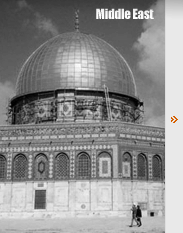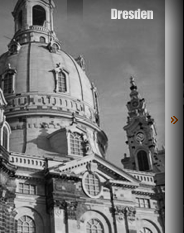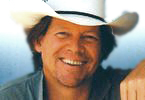
|

|

|

|

|
 9-11 Archive 2007
9-11 Archive 2007 9-11 Planes Flew Directly into Secure Computer Rooms in Both Towers
9-11 Planes Flew Directly into Secure Computer Rooms in Both Towers

9-11 Planes Flew Directly into Secure Computer Rooms in Both TowersJanuary 11, 2007 9-11 remains an unsolved crime of terrorism. Many people who worked at the World Trade Center and the Pentagon have information, which can help solve this crime and find the parties responsible for killing thousands of innocent people. This article, for example, is the result of information provided by one such anonymous person. To solve this crime, it is crucial that the people who have information come forward and share that information. Together, we can solve this heinous crime and make this world a better place. TARGET: COMPUTER ROOMS The two airplanes that struck the twin towers of the World Trade Center on 9-11 flew directly into secure computer rooms in both buildings. Is that merely a coincidence or were the computer rooms equipped to play a role in the crime? Were there homing devices, for example, in the computer rooms that guided the planes to their targets? Were there pre-placed explosives or Thermite on these floors that created the spectacular explosions while destroying the evidence and assisting with the collapses? Let's look at the evidence. Both planes flew directly into computer room like this. NORTH TOWER "At 8:46:30 a.m., five hijackers flew American Airlines Flight 11 (AA 11) with 11 crew and 76 passengers into the north face of WTC 1," according to the Final Report on the Collapse of the World Trade Center Towers produced by the National Institute of Standards and Technology (NIST, Sept. 2005): The aircraft flew almost straight toward the North Tower, banked approximately 25 degrees to the left (i.e. the right wing elevated relative to the left wing) and descended at an angle of about 10 degrees at impact. Moving at about 440 mph, the nose hit the exterior of the tower at the 96th floor. The aircraft cut a gash that was over half the width of the building and extended from the 93rd floor to the 99th floor. All but the lowest of these floors were occupied by Marsh & McLennan, a worldwide insurance company, which also occupied the 100th floor. "The fuselage was centered on the 96th floor slab and filled the 95th and 96th floors top to bottom," the NIST report says. So, what was on the 95th and 96th floors of the North Tower, which were occupied by Marsh & McLennan, Lewis Paul "Jerry" Bremer's company? Bremer, it should be noted, was the Bush-appointed proconsul or administrator of occupied Iraq until the end of June 2004. During Bremer's reign there was no metering of the oil exported from Iraq. Previously, Bremer served as the right-hand man for Henry Kissinger & Associates. Decisions made by Jerry Bremer, Kissinger's partner since the 1970s, are largely responsible for the misery and chaos that have afflicted Iraq since the U.S.-led occupation began. Lewis Paul Bremer (center) was Kissinger's man in Iraq. Here the U.S. proconsul walks through Fallujah with David Petraeus in 2003. (AFP) The NIST report provides some information about "General Description of Tenant Layout." For the floors in question it says, "Generally open space filled with workstations. Offices, conference rooms, and work areas in exterior corners." But on the 95th floor, Marsh & McLennan had a "large walled data center along north and east sides," according to the NIST report. And that's exactly where the plane hit – the north wall of the 95th floor. I called Marsh & McLennan to get a better idea of what was in this "large walled data center" into which American Airlines Flight 11 plunged with deadly precision. Reginald McQuay came on the line as a company spokesman. I told McQuay that Marsh & McLennan got hit broadside on 9-11 and that it appeared that the plane flew straight into their "walled data center," according to the NIST report. "No," McQuay said, "it wasn't really our data center. It was our computer center." Then he suddenly became somewhat distressed, saying he could not even focus on what I was saying and that I should call back next week. Fair enough, I thought. McQuay had confirmed my primary suspicion that the plane that struck the North Tower appears to have been "homed in" or targeted on a secure computer center on the 95th floor – exactly like the plane that struck the South Tower some 16 minutes later. SOUTH TOWER "Sixteen and a half minutes after the first impact, five hijackers flew United Airlines (UA) Flight 175, with 9 crew and 51 passengers, into WTC 2 at about 540 mph, about 100 mph faster than AA Flight 11," the NIST report says. "The center of the nose of the plane struck at the 81st floor slab. The plane was banked 38 degrees to the left (right wing upward) and was heading slightly (6 degrees) downward from the horizontal," it says. The noses of both planes flew directly into secure computer rooms. Although Flight 175 went straight into the 81st floor of the South Tower, the NIST report provides no description of what was on the 81st floor. Not even one word. How odd. While we know that the Fuji Bank was the tenant on floors 79-82 of WTC 2, the NIST report fails to describe the "tenant layout" of floors 79, 81, and 82. I had repeatedly requested information from NIST about the layout of these floors, primarily because many tons of molten metal were seen falling from the 81st floor prior to the collapse. The source of the large amount of molten metal on the 81st floor had not been explained. What could have possibly melted in such large amounts on a normal floor to create several cubic meters of molten metal? Extremely hot molten iron cascaded from the 81st floor shortly before the collapse of WTC 2. If this was molten iron, as Professor Steven E. Jones of Brigham Young University says, and if this molten iron was caused by an aluminothermic reaction of Thermite or Thermate (steel-cutting explosives created from powdered aluminum, iron oxide, and sulfur), then somebody must have pre-loaded the 81st floor of WTC 2 with several tons of a form of Thermite. The molten metal seen falling from the 81st floor was not aluminum, as the NIST report suggests, because molten aluminum would appear silverish-grey in daylight conditions. The metal that is seen falling from the burning South Tower is clearly yellow and white hot. This metal is clearly much hotter than the fires that were observed. So, what could have produced such large amounts of extremely hot molten metal on the 81st floor of WTC 2? The aluminum oxide that is produced in the Thermite or Thermate reaction is a whitish smoke. White smoke was seen coming from the 81st floor prior to each flow of molten metal, according to the NIST report, and large amounts of white smoke are seen prior to and during the collapse of each tower. Was this drywall dust or was this Thermite? Photo: The white smoke is coming from the corner of the South Tower where the molten iron later poured out of. Photo: A close-up of the corner of the South Tower where the molten iron poured from. Photo: The South Tower starts to collapse. Molten iron was blown out of the tower when the explosives went off. As the droplets cooled they turned red, creating a spray of red globules mixed with the white clouds of dust. Some of the whiteness may be due to the spray of aluminum oxide particles. I imagined huge disguised flower pots of powdered Thermite near the elevators of a normal office floor of the South Tower, but even that didn't make sense. Furthermore, if the 81st floor was a normal office floor of Fuji Bank, why doesn't the NIST report simply say so? Silence was all I ever received from NIST. Then, out of the blue, a former bank employee came forward, a person who had visited the 81st floor on a weekly basis. His information explains more than he probably thought and provides us with a major clue about what really happened on 9-11. Fuji Bank had torn up the 81st floor, he said, and stripped it down to reinforce the trusses so that the floor could hold more weight. Then they had built a raised floor and filled the entire floor with server-size Uninterrupted Power Supply (UPS) batteries. These units were bolted to the raised floor which stood about 3 feet above the reinforced 81st floor. Beneath the raised floor ran the cables and power supply that connected the army of batteries. IT techies had to get down on all fours and crawl around beneath the raised floor to connect cables. "The whole floor was batteries," he said, "huge battery-looking things." They were "all black" and "solid, very heavy" things that had been brought in during the night. They had been put in place during the summer prior to 9-11, he said. But were they really batteries? "It's weird," he said. "They were never turned on." So, what really was on the 81st floor of WTC 2? What was in these heavy "battery-looking things?" Were they batteries, or were they Thermite? The whole floor was full of batteries that were never turned on. Where they heavy packets of Thermite made to look like batteries? Only senior Information Technology (IT) personnel from Fuji Bank, or the Japanese banks affiliated with it, had access to the 81st floor computer room, according to the source. The Mizuho Bank was established originally as Mizuho Holdings, Inc. by the merger of Dai-Ichi Kangyo Bank (DKB), Fuji Bank and the Industrial Bank of Japan (IBJ) in 2000. According to the former bank employee, employees of Shimizu-America Corp. also had access to the floor. Shortly after 9-11, the IBJ became the biggest player and took over the new corporation that had been created by the merger, primarily because the offices of the DKB and Fuji Bank had been destroyed in the World Trade Center, the source said. The offices of the IBJ were located on the Avenue of the Americas and became the new headquarters for the bank. The DKB and Fuji Bank personnel soon found themselves out of work. "Nobody worked on that floor," the source said about Floor 81. The whole floor was taken up with a "whole bunch of batteries" and "enclosed server racks" that were so tall that one could not see over the top of them. The enclosed server racks were locked and the only people who could open them were employees of the Shimizu Corp., he said. Didn't the host of NIST scientists think that was worthy of mention? They either did not know that the 81st floor was full of "battery-looking things" or decided not to mention it. How odd. William Torrey, the Atlanta-based senior vice president of Shimizu-America, said he could not say anything about the work that Shimizu did on the 81st floor because of ongoing litigation. Asked about the litigation, Torrey said he could not comment on that either. Seth Martin, the non-Japanese spokesman for the Mizuho Corp., could not give any comment for this article. Mr. Martin did not respond to repeated calls. The NIST documents that accompany the final report confirm the source's information that Fuji Bank had reinforced the 81st floor. Documents dated 1999 say that reinforcements were added to the floor trusses "to accommodate the new UPS workspace." The structural engineering firm was noted as LERA, or Leslie E. Robertson and Associates. Saw Teen See, a managing partner of LERA, said the firm was unable to comment on the work it had done on the 81st floor. "We are not at liberty to comment on this or to provide any further information," she wrote. "Please contact the PANYNJ who are the project owners." PANYNJ is the Port Authority of New York and New Jersey. Fuji Bank & Trust reported 12 out of 125 Japanese expatriate employees missing the day after 9-11. Two American employees of Fuji Bank are also reported to have died on 9-11: Security officer Patrick Adams, 60, and John Andreacchio, 52. Both men were from New York. |
©2010 Christopher Bollyn | Sitemap | christopher@bollyn.com

